Day 1 :
Keynote Forum
Zuhailawati Hussain
School of Materials & Mineral Resources Engineering, Malaysia
Keynote: Development of self-disinfection TiO2 nanoparticles - Polymer coating on metal surface
Time : 9:00-9:30
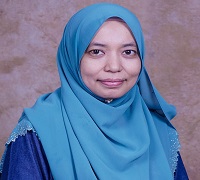
Biography:
Professor Dr. Zuhailawati Hussain is a professor in metallurgy from the School of Materials and Mineral Resources Engineering, Universiti Sains Malaysia. Her research work emphasizes on the development of novel and sustainable metal matrix alloys and composites using environmentally friendly manufacturing methods including powder metallurgy, surface engineering and welding. Professor Zuhailawati highlights selection, formulation, microstructure and fabrication of novel alloys and metal composites in creating new potential of advanced materials benefiting society. Her research on antiviral and antibacterial coating development is supported by Special Program For Research Against Covid-19 (SPRAC) provided by AUN/SEED-Net JICA (304.PBAHAN.6050455.A119). The self-disinfecting TiO2 nanoparticles with biodegradable polymer based coating are expected to combat COVID-19 transmission which could reduce the spreading and help people to relief their anxiety while touching contaminated surfaces in public places particularly metal objects.
Abstract:
Statement of the Problem: To prevent the transmission of COVID-19 many researchers propose oxide nanoparticles to disrupt coronavirus survival on solid surface. For example, when TiO2 nanoparticles interact with visible light, water and oxygen, hydroperoxyl, a free radicals, are releases that able to kill germs, bacteria, fungus and virus on their surfaces. We propose to add the nanoparticles in a medium so that the mixture can be painted or sprayed in a larger area of surface items. However, mechanical integrity of the coating and the effectiveness of the TiO2 nanoparticles within the medium in releasing the free radicals is scarcely reported. The aim of this work is to develop a novel self-disinfection coating which can be applied on metal surfaces to combat coronavirus. Methodology & Theoretical Orientation: TiO2 nanoparticles was added to poly(vinyl alcohol), PVA, which is a water-soluble polymer. The coating was evaluated for microstructure integrity and UV-light absorption properties. Findings: After drying of the raw materials solution, continuous coating of PVA-TiO2 nanoparticles was produced. Examination under SEM (Figure 1) shows that PVA coating has a smooth surface while TiO2 nanoparticles have a spherical like structure with some agglomeration. A contrast structure is observed which indicates the existence of TiO2 nanoparticles embedded in the PVA matrix. UV visible absorption spectrum of PVA-TiO2 composite coating shows energy absorption in range of 352-365.07 nm, in comparison to 320–380 nm of TiO2 nanoparticles. Conclusion & Significance: Continuous coating of PVA containing TiO2 nanoparticles with the absence of crack or pores has been developed. Dispersion and good bonding between TiO2 nanoparticles and the polymer is crucial factor in governing mechanical strength and durability. The coating exhibit UV-Vis energy absorption in values close to TiO2 nanoparticles which possess an optical band gap of 3.2 eV, suggesting a potential for antibacterial properties.
Keynote Forum
Sujoy Kumar Saha
Indian Institute of Engineering Science and Technology, India
Keynote: Nano science and nano engineering to combat SARS-Cov-2 in the Global Peace Perspective

Biography:
Professor Sujoy Kumar Saha is affiliated to Mechanical Engineering Department at the Indian Institute of Engineering Science and Technology Shibpur in India. Professor Saha has graduated with Bachelor’s and Master’s Degree from Jadavpur University, India and he has earned his PhD from Indian Institute of Technology Bombay. He went to Dalhousie University Canada for a year as a Visiting Scholar. Professor Saha has been a UNESCO Scholar at Abdus Salam International Centre for Theoretical Physics, Trieste, Italy tenable at ENEA, Rome. Professor Saha is a Member of the Scientific Research Honour Society, Sigma Xi, a Fellow of ASME and IMechE London. He is a Member of Scientific Council of ICHMT and Assembly of World Conferences on ExHFT.
Abstract:
The nanoscience and nanoengineering is playing a vital role and providing a useful insight into how the infecting species, the severe acute respiratory syndrome, the Corona virus 2 (SARS-Cov-2) is wreaking havoc on host human cells since the identification of the virus in December 2019. Vigorous research is on the cards all over the world in every avenue of medicine. Researchers are investigating to know how this nano-dimensioned virus spreads and infects human beings. The virus causes wide range of severe health issues. The scientists and researchers are trying desperately to know the cause and ultimately what drugs would be able to effectively kill this virus safely. Why Nanoscience ? It is so because the electron microscopy has shown the diameter of the virus ranges between 50 nm to 140 nm. In addition to measuring the spherical size of the virus particle, it has also been confirmed that the length of the size tumours surrounding the outermost surface of SARS-CoV-2 can vary in length from 9 to 12 nm. The talk would centre around the above.
Keynote Forum
Osman Adiguzel
Firat University, India
Keynote: Crystallographic reactions in memory behavior of shape memory alloys
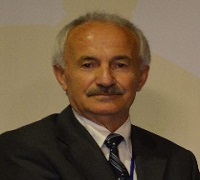
Biography:
Dr Adiguzel graduated from Department of Physics, Ankara University, Turkey in 1974 and received PhD- degree from Dicle University, Diyarbakir-Turkey. He has studied at Surrey University, Guildford, UK, as a post doctoral research scientist in 1986-1987, and studied on shape memory alloys. He worked as research assistant, 1975-80, at Dicle University and shifted to Firat University, Elazig, Turkey in 1980. He became professor in 1996, and he has already been working as professor. He published over 80 papers in international and national journals; He joined over 100 conferences and symposia in international and national level as participant, invited speaker or keynote speaker with contributions of oral or poster. He served the program chair or conference chair/co-chair in some of these activities. In particular, he joined in last seven years (2014 - 2020) over 70 conferences as Keynote Speaker and Conference Co-Chair organized by different companies. He supervised 5 PhD- theses and 3 M.Sc- theses.
Dr. Adiguzel served his directorate of Graduate School of Natural and Applied Sciences, Firat University, in 1999-2004. He received a certificate awarded to him and his experimental group in recognition of significant contribution of 2 patterns to the Powder Diffraction File – Release 2000. The ICDD (International Centre for Diffraction Data) also appreciates cooperation of his group and interest in Powder Diffraction File.
Abstract:
A series of alloy systems take place in a class of adaptive structural materials called intelligent materials by giving stimulus response to changes in the external conditions. Shape memory alloys take place in this group by exhibiting a peculiar property called shape memory effect, which is characterized by the recoverability of two certain shapes at different temperatures. These alloys are cooled deformed plastically and recover the original shape after these processes, and cycle between the deformed and original shapes on cooling and heating, respectively. The strain energy is stored with plastic deformation, and released on heating, by means of reverse austenite transformation. These alloys are used as functional materials in many fields from biomedical to the aeronautical industry. They are used as deformation absorbent materials in control of civil structures subjected to seismic events. Shape memory effect is initiated by successive cooling and deformation processes and performed thermally by heating and cooling, shape of materials cycle between original and deformed shapes in bulk level, whereas the crystal structure cycles between the twinned and ordered parent phase structures, by means of forward martensitic and reverse austenitic transformations. This behaviour is called thermoelasticity. Shape memory effect is governed by two crystallographic transformations, thermal and stress induced martensitic transformations. Thermal induced transformation occurs along with lattice twinning on cooling and ordered parent phase structures turn into twinned martensite structures. Twinned martensite structures turn into detwinned martensite structures by means of stress induced transformation by deforming plastically in martensitic condition. Thermal induced martensitic transformation is lattice-distorting phase transformation and occurs as martensite variants with the cooperative movement of atoms in <110>-type directions on {110}-type planes of austenite matrix by means of shear-like mechanism. Martensitic transformations occur by two or more lattice invariant shears on {110}-type planes of austenite matrix which is basal plane or stacking plane for martensite. In the martensitic transformation, the lattice of high temperature austenite phase has greater crystallographic symmetry than that of the low-temperature product phase.
Keynote Forum
Magnus S Magnusson
University of Iceland, Iceland
Keynote: Sudden and unique mass social bio-mathematical self-similarity between nano and human scales: molecular and textual viruses as collaborating and competing T-strings
Time : 10:30-11:00
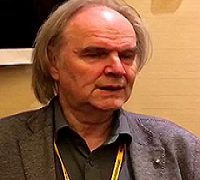
Biography:
Magnus S. Magnusson, PhD, Emeritus Research Professor, founder, and director of the Human Behavior Laboratory (hbl.hi.is), School of Health Sciences, University of Iceland. Author of the T-system, detection algorithms and software THEMETM (PatternVision.com), initially focusing on real-time organization of behavior. Co-directed of two-year project “DNA analysis with Theme”. Keynotes in biology, neuroscience, mathematics, science of religion, proteomics, A.I., robotics and nanoscience. Associate Professor and Deputy Director 1983-1988 in the Museum of Mankind of the French National Museum of Natural History, Paris. Repeatedly, invited Professor at the University of Paris V, VIII & XIII. Now works in formal collaboration between 32 European and American universities initiated 1995 at the University Rene Descartes of Paris V, Sorbonne, based on “Magnusson’s analytical model”.
Abstract:
Statement of the Problem: Even after the invention of the light microscope and the telescope, until very recently humans were conscious of only a very narrow world. In the beginning of the 20th century still unaware of the existence of, for example, galaxies and the “molecules of life”, ignoring the nanoworld, which its greatest minds thus could not consider until a few decades ago.
This talk is based on definition and detection of temporal T-patterns, hierarchical patterns repeated with significant translation symmetry and discovered in the temporal structure of neuronal, animal, and human behavior and interactions as well as in T-patterned material strings, T-strings, found in information molecules and texts.
After billions of years of evolution of unicellular, multicellular, and mass-social life, unique self-similarity suddenly appeared between protein and human mass-societies. What was new?
Methodology & Theoretical Orientation: This project began in the early 1970’s much inspired by N. Tinbergen, K. Lorenz, and K. von Frisch’s research on animal and human social behavior winning the Nobel Prize in Physiology or Medicine in 1973, the first in Ethology. With insects as smallest animals studied, none were components of others, no nanoscale actors, and no self-similarity.
Billions of years ago, the RNA world invented extra individual purely informational T-strings, DNA, and soon there was only the DNA-based world of (intra-cellular) mass-social proteins. Billions of years later, as the first in the unicellular and multicellular world, humans suddenly invented such T-strings, TEXT, and now nearly all human life is TEXT-based having allowed in an eye blink the advent of modern knowledge, science, and technology.
Conclusion & Significance: The structural and functional analogies between molecular and textual T-strings in protein and human mass-societies, now draws special attention to complex collaborations and competitions among powerful T-strings, across >9 orders of size: molecular and textual viruses.
- Nanomedicine & Nanobiotechnology, Advanced Nanomaterials- production, Synthesis and Processing, Nano patterning, Nano Lithography & Nano Imprinting, Graphene and Applications, Bio-Nanomaterials and Biomedical Devices, Applications, Nanotechnology & Energy, Medicinal Chemistry and Drug Discovery, Applied Medicinal Chemistry, Applications of Mass Spectrometry, Fundamentals of Mass Spectrometry, Frontiers in Chemistry
Location: Webinar
Session Introduction
Sari Ramo
Natural Resources Institute Finland (Luke), Finland
Title: Development and validation of a UHPLC-MS/MS method for the analysis of mycotoxins in onion
Time : 11:00-11:30
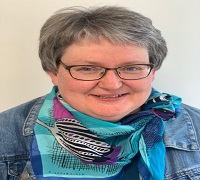
Biography:
Sari Rämö (M.Sc.) is the first year PhD student in PCS program at the University of Turku and works as a research scientist in Natural Research Institute Finland (Luke). She has over 20 years experience about mycotoxin analysis in cereals by gas chromatography - mass spectrometry(GC-MS). She has focused on analysing mycotoxins in onion and grass silage by liquid chromatography - mass spectrometry (LC-MS) during last five years. She has published 20 peer-reviewed scientific articles, the last one about Fusarium-toxins in onion. Her supervisor, Satu Latvala (PhD) has studied Fusarium fungi in different plants by molecular biology methods.
Abstract:
The Fusarium species causing Fusarium basal rot (FBR) in onion may also produce mycotoxins that are potentially harmful to humans and animals. The main mycotoxins produced by Fusarium oxysporum and Fusarium proliferatum are beauvericin (BEA), moniliformin (MON) and fumonisins B1, B2 and B3 (FB1, FB2 and FB3). A multiple reaction monitoring technique with ultra-high performance liquid chromatography tandem mass spectrometry (MRM UHPLC-MS/MS) for onion matrix was established to study these mycotoxins in the harvested onions. In the in-house validated protocol the onion samples were extracted with methanol:water (3:1) using magnetic stirring for 15 minutes. No cleanup of extracts was needed prior to analysis. The target mycotoxins were separated on an Acquity UPLC system BEH C18 column with gradient elution. Mycotoxins were identified and quantified using 13C-FB1 as internal standard. FBs and BEA were determined directly from the filtered extracts by ES+ ionization with at least two MRMs whereas MON required sample concentration prior to analysis and ES- ionization with one usable MRM. Minor matrix effect was compensated using multipoint matrix-matched calibration curves with uninfected onion sample. For the mycotoxins studied, a good linearity was obtained (R2≥ 0.99) and the recoveries were in the range of 67-122%, with the highest standard deviation for MON, 22%. The limits of quantification were from 2.5 to 10 ng g-1 in onion matrix. The method was successfully employed for the analysis of mycotoxins in harvested onions showing FBR symptoms and found to be infected with F. oxysporum and F. proliferatum.
Valentyn Nastasenko
Kherson State Maritime Academy, Ukraine
Title: On the possibility of combating covid-19 by the method of resonant vibrations
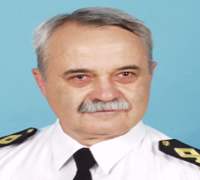
Biography:
Valentyn Nastasenko, Kherson State Maritime Academy Ukraine, faculties’ Engineering and electronics, the department of transport technologies and mechanical engineering. Dr. technical sciences, Professor. A sphere of scientific interests includes quantum physics, the theory of gravitation, fundamentals of the material world and the birth of the Universe, the author of more than 70 scientific works in these spheres.
Abstract:
The SARS-CoV-19 coronavirus pandemic poses a threat to all of mankind, and this threat is currently constantly growing. Recently, many mutations of the virus have appeared that are more aggressive and harmful than its original strains. At the same time, they are constantly and very quickly updated.
Vaccination does not solve all problems. It can provide individual protection for a person, but it does not allow the virus to be destroyed in the environment, even with the development of herd immunity in â…” of the world's population (about 4…5 billion people). This immunity has a limited duration, which requires re-vaccination. New mutations of viruses also require new vaccinations. Therefore, constant development of new vaccines is required, which is mainly of carried out in the catching up, with new strains in outstripping of them. This leads to local periods of lack of immune protection in people, the fight against which is possible only by introducing restrictions that are unfavorable both for residents and for the economy of all countries of the world.
This process becomes endless and requires the involvement of new intellectual, labor and material and technical resources, which are diverted from other important areas of the development of human life and activities.
Disinfection with chemicals and ultraviolet light can destroy of virus, but they also have their drawbacks and limitations in their application. For example Disinfection with ultraviolet light (quartzing) kills everything of total cells. Including cells of our body have damage. Therefore, at the time of its holding, everyone must leave the premises. Including the person, with is carrier of COVID-19 viruses. When he returns to this room, quartzing will be useless. A similar problem arises when using chemical disinfection. Therefore, the destruction of COVID-19 must be constantly.
Hence, it is necessary to search for new more effective ways, which is an important and urgent scientific and practical task posed in this work. It is based on the phenomenon of resonance, leading to an abrupt increase in the amplitude A of forced vibrations of a system, when the frequency ω of the external influence of vibrations on them approaches any of their natural vibrations ωо. The phenomenon of resonance is widely used in engineering for the mechanical destruction of materials and structures created from them. Vibrational resonance effects on bacteria and viruses are also possible. Modern nanotechnology makes it possible to create such devices in the form of medallions or microchips of mobile phones. Extensive research is needed in this area.
